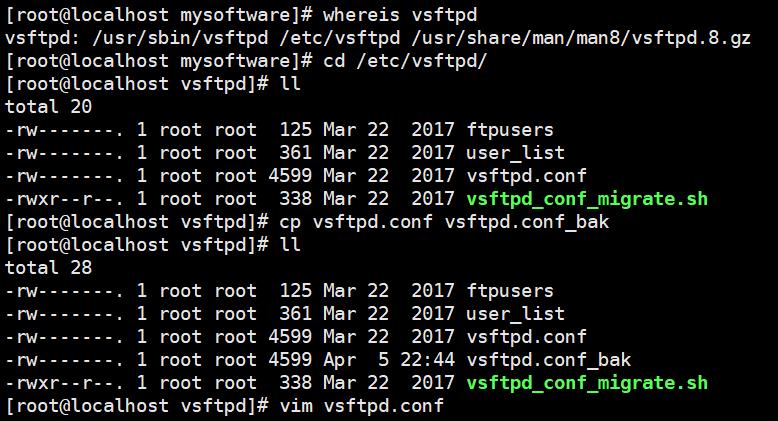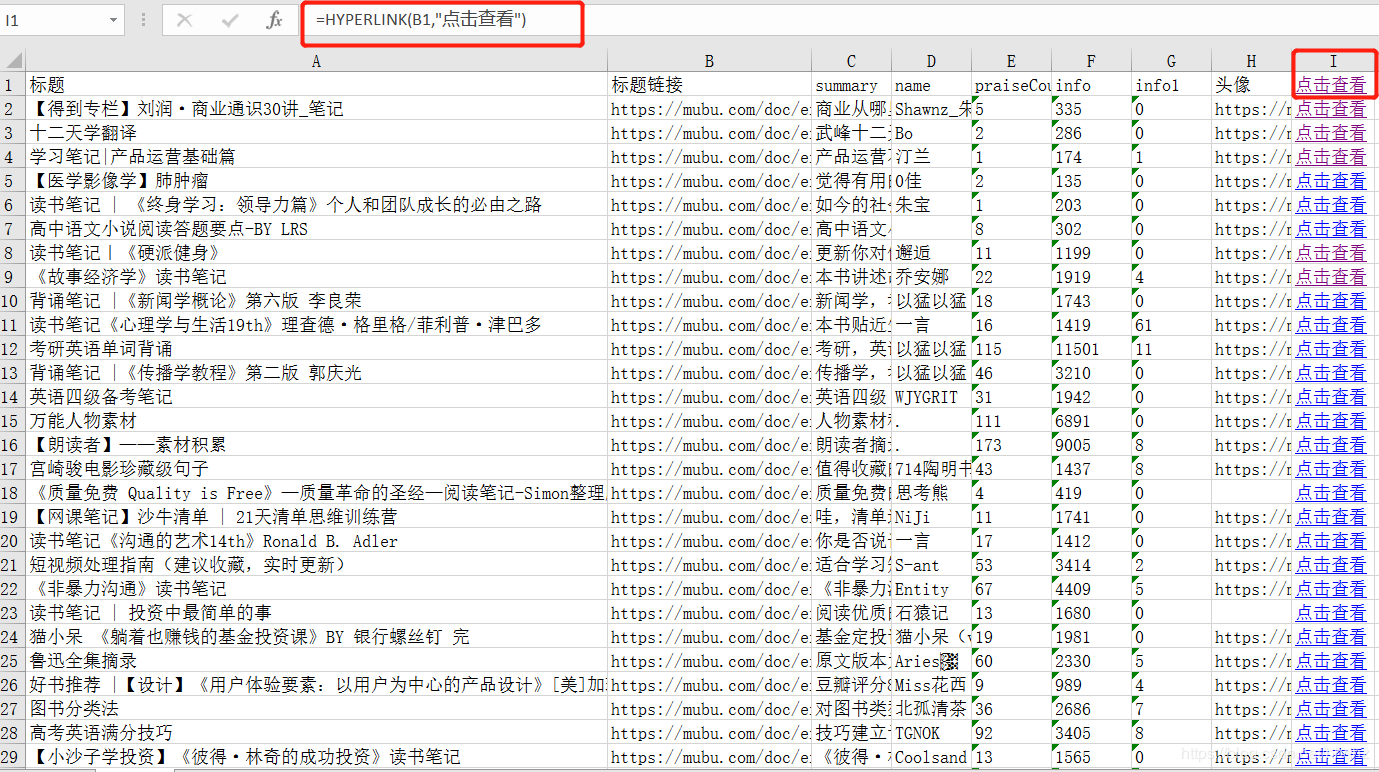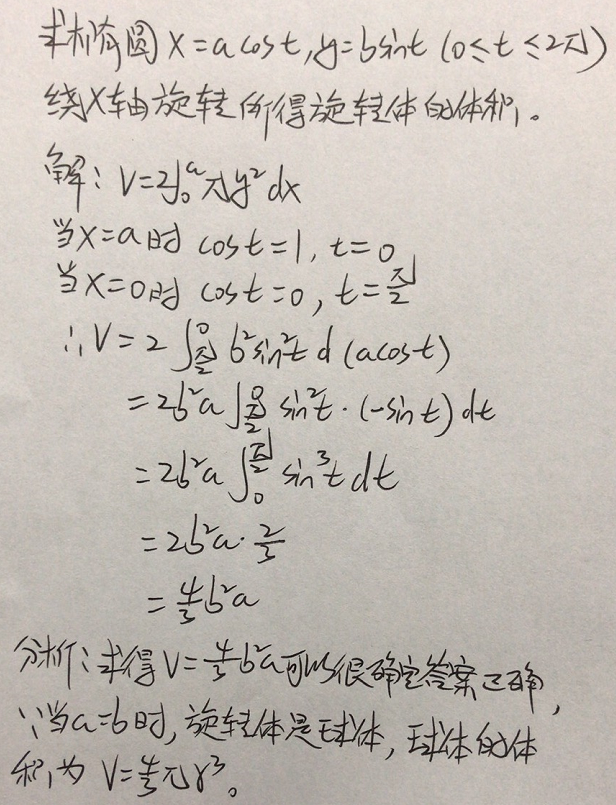LinkedList源码剖析
1. LinkedList简介
LinkedList是基于双向循环链表(从源码中可以很容易看出)实现的,除了可以当作链表来操作外,它还可以当作栈,队列和双端队列来使用。
LinkedList同样是非线程安全的,只在单线程下适合使用。
LinkedList实现了Serializable接口,因此它支持序列化,能够通过序列化传输,实现了Cloneable接口,能被克隆。
2. LinkedList源码剖析
LinkedList的源码如下(加入了比较详细的注释)
package java.util;public class LinkedList<E> extends AbstractSequentialList<E> implements List<E>, Deque<E>, Cloneable, java.io.Serializable {// 链表的表头,表头不包含任何数据。Entry是个链表类数据结构。private transient Entry<E> header = new Entry<E>(null, null, null);// LinkedList中元素个数private transient int size = 0;// 默认构造函数:创建一个空的链表public LinkedList() {header.next = header.previous = header;}// 包含“集合”的构造函数:创建一个包含“集合”的LinkedListpublic LinkedList(Collection<? extends E> c) {this();addAll(c);}// 获取LinkedList的第一个元素public E getFirst() {if (size==0)throw new NoSuchElementException();// 链表的表头header中不包含数据。// 这里返回header所指下一个节点所包含的数据。return header.next.element;}// 获取LinkedList的最后一个元素public E getLast() {if (size==0)throw new NoSuchElementException();// 由于LinkedList是双向链表;而表头header不包含数据。// 因而,这里返回表头header的前一个节点所包含的数据。return header.previous.element;}// 删除LinkedList的第一个元素public E removeFirst() {return remove(header.next);}// 删除LinkedList的最后一个元素public E removeLast() {return remove(header.previous);}// 将元素添加到LinkedList的起始位置public void addFirst(E e) {addBefore(e, header.next);}// 将元素添加到LinkedList的结束位置public void addLast(E e) {addBefore(e, header);}// 判断LinkedList是否包含元素(o)public boolean contains(Object o) {return indexOf(o) != -1;}// 返回LinkedList的大小public int size() {return size;}// 将元素(E)添加到LinkedList中public boolean add(E e) {// 将节点(节点数据是e)添加到表头(header)之前。// 即,将节点添加到双向链表的末端。addBefore(e, header);return true;}// 从LinkedList中删除元素(o)// 从链表开始查找,如存在元素(o)则删除该元素并返回true;// 否则,返回false。public boolean remove(Object o) {if (o==null) {// 若o为null的删除情况for (Entry<E> e = header.next; e != header; e = e.next) {if (e.element==null) {remove(e);return true;}}} else {// 若o不为null的删除情况for (Entry<E> e = header.next; e != header; e = e.next) {if (o.equals(e.element)) {remove(e);return true;}}}return false;}// 将“集合(c)”添加到LinkedList中。// 实际上,是从双向链表的末尾开始,将“集合(c)”添加到双向链表中。public boolean addAll(Collection<? extends E> c) {return addAll(size, c);}// 从双向链表的index开始,将“集合(c)”添加到双向链表中。public boolean addAll(int index, Collection<? extends E> c) {if (index < 0 || index > size)throw new IndexOutOfBoundsException("Index: "+index+", Size: "+size);Object[] a = c.toArray();// 获取集合的长度int numNew = a.length;if (numNew==0)return false;modCount++;// 设置“当前要插入节点的后一个节点”Entry<E> successor = (index==size ? header : entry(index));// 设置“当前要插入节点的前一个节点”Entry<E> predecessor = successor.previous;// 将集合(c)全部插入双向链表中for (int i=0; i<numNew; i++) {Entry<E> e = new Entry<E>((E)a[i], successor, predecessor);predecessor.next = e;predecessor = e;}successor.previous = predecessor;// 调整LinkedList的实际大小size += numNew;return true;}// 清空双向链表public void clear() {Entry<E> e = header.next;// 从表头开始,逐个向后遍历;对遍历到的节点执行一下操作:// (01) 设置前一个节点为null// (02) 设置当前节点的内容为null// (03) 设置后一个节点为“新的当前节点”while (e != header) {Entry<E> next = e.next;e.next = e.previous = null;e.element = null;e = next;}header.next = header.previous = header;// 设置大小为0size = 0;modCount++;}// 返回LinkedList指定位置的元素public E get(int index) {return entry(index).element;}// 设置index位置对应的节点的值为elementpublic E set(int index, E element) {Entry<E> e = entry(index);E oldVal = e.element;e.element = element;return oldVal;}// 在index前添加节点,且节点的值为elementpublic void add(int index, E element) {addBefore(element, (index==size ? header : entry(index)));}// 删除index位置的节点public E remove(int index) {return remove(entry(index));}// 获取双向链表中指定位置的节点private Entry<E> entry(int index) {if (index < 0 || index >= size)throw new IndexOutOfBoundsException("Index: "+index+", Size: "+size);Entry<E> e = header;// 获取index处的节点。// 若index < 双向链表长度的1/2,则从前先后查找;// 否则,从后向前查找。if (index < (size >> 1)) {for (int i = 0; i <= index; i++)e = e.next;} else {for (int i = size; i > index; i--)e = e.previous;}return e;}// 从前向后查找,返回“值为对象(o)的节点对应的索引”// 不存在就返回-1public int indexOf(Object o) {int index = 0;if (o==null) {for (Entry e = header.next; e != header; e = e.next) {if (e.element==null)return index;index++;}} else {for (Entry e = header.next; e != header; e = e.next) {if (o.equals(e.element))return index;index++;}}return -1;}// 从后向前查找,返回“值为对象(o)的节点对应的索引”// 不存在就返回-1public int lastIndexOf(Object o) {int index = size;if (o==null) {for (Entry e = header.previous; e != header; e = e.previous) {index--;if (e.element==null)return index;}} else {for (Entry e = header.previous; e != header; e = e.previous) {index--;if (o.equals(e.element))return index;}}return -1;}// 返回第一个节点// 若LinkedList的大小为0,则返回nullpublic E peek() {if (size==0)return null;return getFirst();}// 返回第一个节点// 若LinkedList的大小为0,则抛出异常public E element() {return getFirst();}// 删除并返回第一个节点// 若LinkedList的大小为0,则返回nullpublic E poll() {if (size==0)return null;return removeFirst();}// 将e添加双向链表末尾public boolean offer(E e) {return add(e);}// 将e添加双向链表开头public boolean offerFirst(E e) {addFirst(e);return true;}// 将e添加双向链表末尾public boolean offerLast(E e) {addLast(e);return true;}// 返回第一个节点// 若LinkedList的大小为0,则返回nullpublic E peekFirst() {if (size==0)return null;return getFirst();}// 返回最后一个节点// 若LinkedList的大小为0,则返回nullpublic E peekLast() {if (size==0)return null;return getLast();}// 删除并返回第一个节点// 若LinkedList的大小为0,则返回nullpublic E pollFirst() {if (size==0)return null;return removeFirst();}// 删除并返回最后一个节点// 若LinkedList的大小为0,则返回nullpublic E pollLast() {if (size==0)return null;return removeLast();}// 将e插入到双向链表开头public void push(E e) {addFirst(e);}// 删除并返回第一个节点public E pop() {return removeFirst();}// 从LinkedList开始向后查找,删除第一个值为元素(o)的节点// 从链表开始查找,如存在节点的值为元素(o)的节点,则删除该节点public boolean removeFirstOccurrence(Object o) {return remove(o);}// 从LinkedList末尾向前查找,删除第一个值为元素(o)的节点// 从链表开始查找,如存在节点的值为元素(o)的节点,则删除该节点public boolean removeLastOccurrence(Object o) {if (o==null) {for (Entry<E> e = header.previous; e != header; e = e.previous) {if (e.element==null) {remove(e);return true;}}} else {for (Entry<E> e = header.previous; e != header; e = e.previous) {if (o.equals(e.element)) {remove(e);return true;}}}return false;}// 返回“index到末尾的全部节点”对应的ListIterator对象(List迭代器)public ListIterator<E> listIterator(int index) {return new ListItr(index);}// List迭代器private class ListItr implements ListIterator<E> {// 上一次返回的节点private Entry<E> lastReturned = header;// 下一个节点private Entry<E> next;// 下一个节点对应的索引值private int nextIndex;// 期望的改变计数。用来实现fail-fast机制。private int expectedModCount = modCount;// 构造函数。// 从index位置开始进行迭代ListItr(int index) {// index的有效性处理if (index < 0 || index > size)throw new IndexOutOfBoundsException("Index: "+index+ ", Size: "+size);// 若 “index 小于 ‘双向链表长度的一半’”,则从第一个元素开始往后查找;// 否则,从最后一个元素往前查找。if (index < (size >> 1)) {next = header.next;for (nextIndex=0; nextIndex<index; nextIndex++)next = next.next;} else {next = header;for (nextIndex=size; nextIndex>index; nextIndex--)next = next.previous;}}// 是否存在下一个元素public boolean hasNext() {// 通过元素索引是否等于“双向链表大小”来判断是否达到最后。return nextIndex != size;}// 获取下一个元素public E next() {checkForComodification();if (nextIndex == size)throw new NoSuchElementException();lastReturned = next;// next指向链表的下一个元素next = next.next;nextIndex++;return lastReturned.element;}// 是否存在上一个元素public boolean hasPrevious() {// 通过元素索引是否等于0,来判断是否达到开头。return nextIndex != 0;}// 获取上一个元素public E previous() {if (nextIndex == 0)throw new NoSuchElementException();// next指向链表的上一个元素lastReturned = next = next.previous;nextIndex--;checkForComodification();return lastReturned.element;}// 获取下一个元素的索引public int nextIndex() {return nextIndex;}// 获取上一个元素的索引public int previousIndex() {return nextIndex-1;}// 删除当前元素。// 删除双向链表中的当前节点public void remove() {checkForComodification();Entry<E> lastNext = lastReturned.next;try {LinkedList.this.remove(lastReturned);} catch (NoSuchElementException e) {throw new IllegalStateException();}if (next==lastReturned)next = lastNext;elsenextIndex--;lastReturned = header;expectedModCount++;}// 设置当前节点为epublic void set(E e) {if (lastReturned == header)throw new IllegalStateException();checkForComodification();lastReturned.element = e;}// 将e添加到当前节点的前面public void add(E e) {checkForComodification();lastReturned = header;addBefore(e, next);nextIndex++;expectedModCount++;}// 判断 “modCount和expectedModCount是否相等”,依次来实现fail-fast机制。final void checkForComodification() {if (modCount != expectedModCount)throw new ConcurrentModificationException();}}// 双向链表的节点所对应的数据结构。// 包含3部分:上一节点,下一节点,当前节点值。private static class Entry<E> {// 当前节点所包含的值E element;// 下一个节点Entry<E> next;// 上一个节点Entry<E> previous;/** * 链表节点的构造函数。 * 参数说明: * element —— 节点所包含的数据 * next —— 下一个节点 * previous —— 上一个节点 */Entry(E element, Entry<E> next, Entry<E> previous) {this.element = element;this.next = next;this.previous = previous;}}// 将节点(节点数据是e)添加到entry节点之前。private Entry<E> addBefore(E e, Entry<E> entry) {// 新建节点newEntry,将newEntry插入到节点e之前;并且设置newEntry的数据是eEntry<E> newEntry = new Entry<E>(e, entry, entry.previous);newEntry.previous.next = newEntry;newEntry.next.previous = newEntry;// 修改LinkedList大小size++;// 修改LinkedList的修改统计数:用来实现fail-fast机制。modCount++;return newEntry;}// 将节点从链表中删除private E remove(Entry<E> e) {if (e == header)throw new NoSuchElementException();E result = e.element;e.previous.next = e.next;e.next.previous = e.previous;e.next = e.previous = null;e.element = null;size--;modCount++;return result;}// 反向迭代器public Iterator<E> descendingIterator() {return new DescendingIterator();}// 反向迭代器实现类。private class DescendingIterator implements Iterator {final ListItr itr = new ListItr(size());// 反向迭代器是否下一个元素。// 实际上是判断双向链表的当前节点是否达到开头public boolean hasNext() {return itr.hasPrevious();}// 反向迭代器获取下一个元素。// 实际上是获取双向链表的前一个节点public E next() {return itr.previous();}// 删除当前节点public void remove() {itr.remove();}}// 返回LinkedList的Object[]数组public Object[] toArray() {// 新建Object[]数组Object[] result = new Object[size];int i = 0;// 将链表中所有节点的数据都添加到Object[]数组中for (Entry<E> e = header.next; e != header; e = e.next)result[i++] = e.element;return result;}// 返回LinkedList的模板数组。所谓模板数组,即可以将T设为任意的数据类型public <T> T[] toArray(T[] a) {// 若数组a的大小 < LinkedList的元素个数(意味着数组a不能容纳LinkedList中全部元素)// 则新建一个T[]数组,T[]的大小为LinkedList大小,并将该T[]赋值给a。if (a.length < size)a = (T[])java.lang.reflect.Array.newInstance(a.getClass().getComponentType(), size);// 将链表中所有节点的数据都添加到数组a中int i = 0;Object[] result = a;for (Entry<E> e = header.next; e != header; e = e.next)result[i++] = e.element;if (a.length > size)a[size] = null;return a;}// 克隆函数。返回LinkedList的克隆对象。public Object clone() {LinkedList<E> clone = null;// 克隆一个LinkedList克隆对象try {clone = (LinkedList<E>) super.clone();} catch (CloneNotSupportedException e) {throw new InternalError();}// 新建LinkedList表头节点clone.header = new Entry<E>(null, null, null);clone.header.next = clone.header.previous = clone.header;clone.size = 0;clone.modCount = 0;// 将链表中所有节点的数据都添加到克隆对象中for (Entry<E> e = header.next; e != header; e = e.next)clone.add(e.element);return clone;}// java.io.Serializable的写入函数// 将LinkedList的“容量,所有的元素值”都写入到输出流中private void writeObject(java.io.ObjectOutputStream s)throws java.io.IOException {// Write out any hidden serialization magics.defaultWriteObject();// 写入“容量”s.writeInt(size);// 将链表中所有节点的数据都写入到输出流中for (Entry e = header.next; e != header; e = e.next)s.writeObject(e.element);}// java.io.Serializable的读取函数:根据写入方式反向读出// 先将LinkedList的“容量”读出,然后将“所有的元素值”读出private void readObject(java.io.ObjectInputStream s)throws java.io.IOException, ClassNotFoundException {// Read in any hidden serialization magics.defaultReadObject();// 从输入流中读取“容量”int size = s.readInt();// 新建链表表头节点header = new Entry<E>(null, null, null);header.next = header.previous = header;// 从输入流中将“所有的元素值”并逐个添加到链表中for (int i=0; i<size; i++)addBefore((E)s.readObject(), header);}}
3. 几点总结
关于LinkedList的源码,给出几点比较重要的总结:
1、从源码中很明显可以看出,LinkedList的实现是基于双向循环链表的,且头结点中不存放数据,如下图;

2、注意两个不同的构造方法。无参构造方法直接建立一个仅包含head节点的空链表,包含Collection的构造方法,先调用无参构造方法建立一个空链表,然后将Collection中的数据加入到链表的尾部后面。
3、在查找和删除某元素时,源码中都划分为该元素为null和不为null两种情况来处理,LinkedList中允许元素为null。
4、LinkedList是基于链表实现的,因此不存在容量不足的问题,所以这里没有扩容的方法。
5、注意源码中的Entry entry(int index)方法。该方法返回双向链表中指定位置处的节点,而链表中是没有下标索引的,要指定位置出的元素,就要遍历该链表,从源码的实现中,我们看到这里有一个加速动作。源码中先将index与长度size的一半比较,如果index
// 双向链表的节点所对应的数据结构。// 包含3部分:上一节点,下一节点,当前节点值。private static class Entry<E> {// 当前节点所包含的值E element;// 下一个节点Entry<E> next;// 上一个节点Entry<E> previous;/** * 链表节点的构造函数。 * 参数说明: * element —— 节点所包含的数据 * next —— 下一个节点 * previous —— 上一个节点 */Entry(E element, Entry<E> next, Entry<E> previous) {this.element = element;this.next = next;this.previous = previous;}}
7、LinkedList是基于链表实现的,因此插入删除效率高,查找效率低(虽然有一个加速动作)。
8、要注意源码中还实现了栈和队列的操作方法,因此也可以作为栈、队列和双端队列来使用。
原文链接:https://github.com/GeniusVJR/LearningNotes




































还没有评论,来说两句吧...